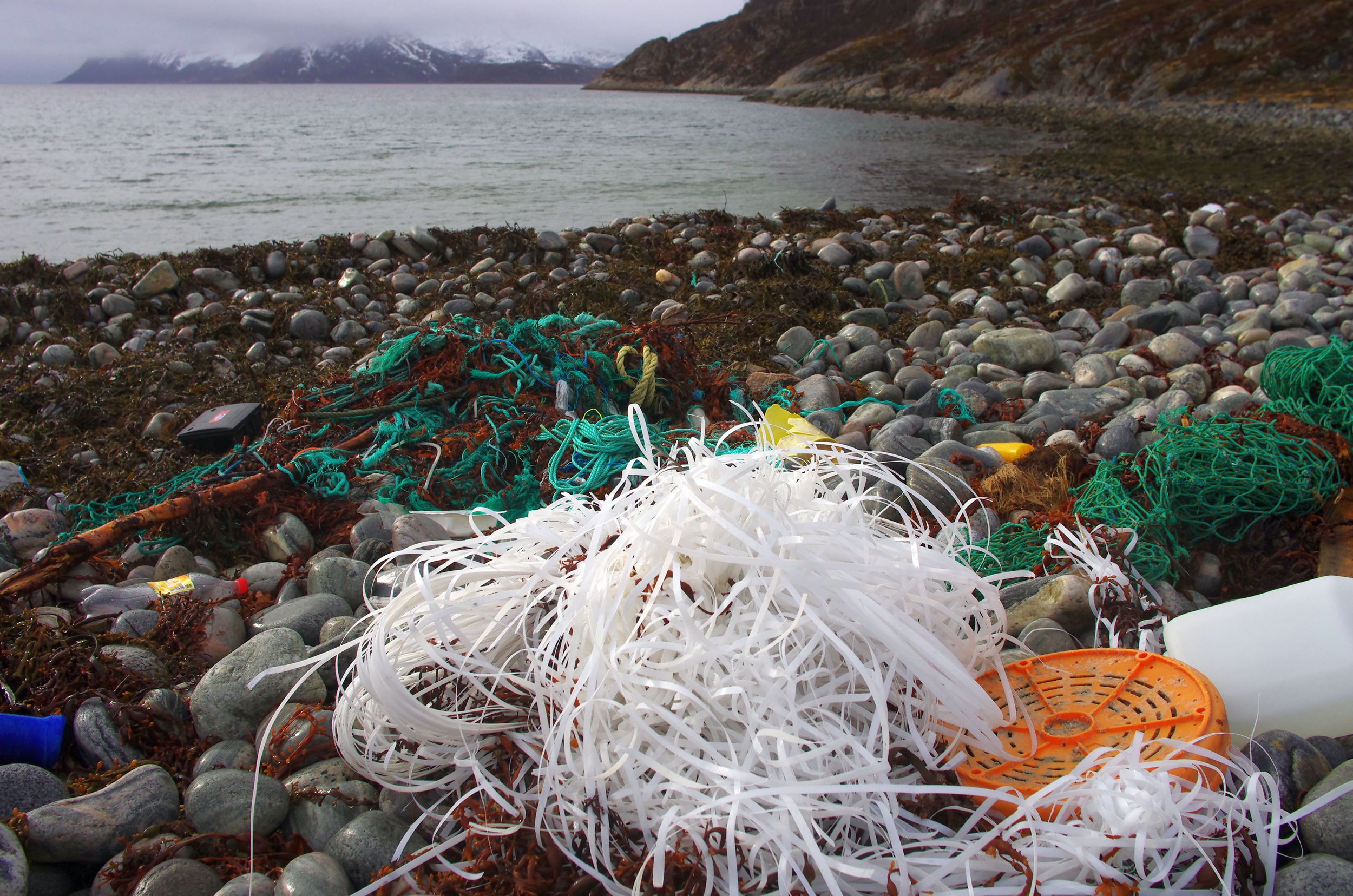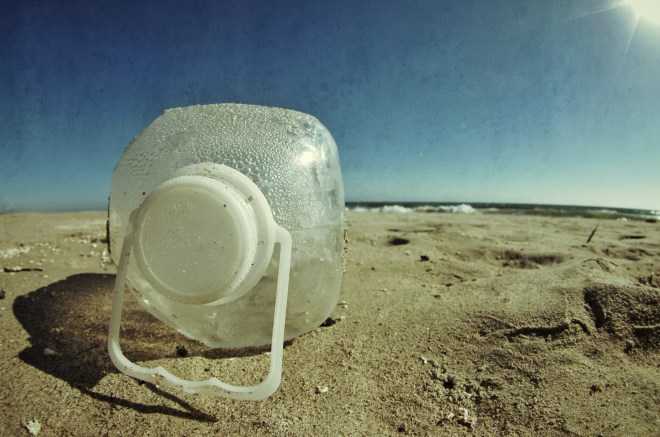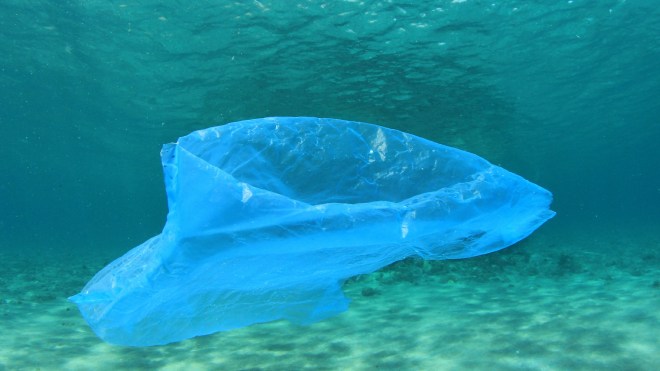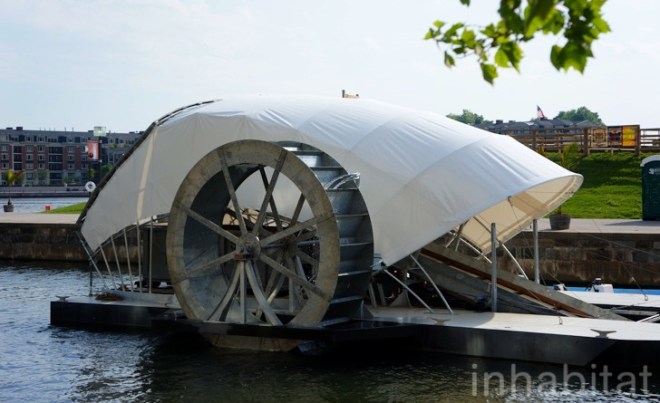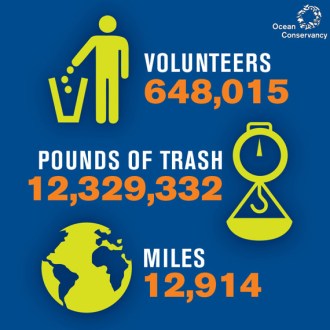When you hear the words “Great Pacific Garbage Patch,” chances are you’re picturing a thick, floating isle of mucked-up rubber duckies and soda rings and tractor tires jutting from the deep blue ocean like some dystopian fjord.
Er, at least, I was.
But it’s not one humongous island or solid “patch,” really, at all. The Great Pacific Garbage Patch is more like a loose collection of tiny plastic bits scattered throughout the North Pacific Gyre, a slow-moving whirlpool that, thanks to ocean currents and the Earth’s rotation, sucks up marine debris. “It’s very diffuse,” says Erik Zettler, professor of oceanography at the Sea Education Association. “Most of it looks like pristine, blue ocean.” In fact, inside any of the ocean’s five famous gyres, “if you didn’t have a net, you wouldn’t know [the plastic] was there.”
Turns out, when it comes to plastic gunk in the ocean, there’s a sea of misconceptions and unresolved research. I asked five oceanographers to help me wade through the facts, fiction, and — more importantly — potential solutions.
Here’s what you need to know about plastic in the ocean:
1. Most of the plastic is concentrated in the five subtropical gyres.
Relax: Our oceans aren’t uniformly made of plastic soup. Most of the plastic is in these major areas. “Outside of the five gyres,” says Zettler, “it’s very rare to catch plastic in your net.”
2. Overall, ocean plastic is very hard to measure.
“You can read varying accounts of the problem and how big it is and how scary it is,” says Sea Education Association principal investigator Kara Lavender Law. “I think the most pressing problem is we don’t know the answers yet. We don’t know how much plastic there is or where it is.”
Part of the reason for that is the bulk of the data around ocean plastics comes from what we can trawl from the water’s surface. But many common plastics, such as PET bottles, are dense enough to sink. And so much of the plastic has broken down into such tiny, tiny fragments that, quite frankly, “where the observations end are at the mesh size of your net,” says Giora Proskurowski, a research scientist with the Interactive Oceans program at the University of Washington.
Although the planet currently produces about 300 million tons of plastic annually, a recent study estimated just 40,000 tons of plastic is floating on the ocean’s surface. That’s a whopping 99 percent less than what researchers expected to find. They suspect a lot of the waste either sinks or gets eaten by marine animals or degrades into ever-teensier particles that are having as-of-yet unknown impacts on the ocean.
Marine debris research is a nascent field, and industrial plastic production didn’t even begin until after World War II. Although the ocean’s plastics problem has “exploded in the public imagination,” says Giora Proskurowski, the scientific-funding hierarchy for this kind of thing is only just starting to shift.
3. Deep ocean cleanup projects (so far) aren’t efficient …
The ocean is a vast, vast place: The North Pacific gyre alone is roughly twice the size of the United States. The amount of money, boats, booms, and nets it’d take to actually make any kind of real headway is very unlikely to be carbon neutral. “The problem is you’re trying to protect the environment,” says SEA’s Erik Zettler. “Even if price wasn’t an object, what’s the net benefit for the ecosystem? No one’s convinced me yet.”
Plus, the tiny, broken-down stuff is virtually impossible to extract. “Most of the fragments of plastic in the gyre are the same size as the zooplankton and other animals at the base of the food web,” says George Leonard, chief scientist with the Ocean Conservancy. “The only way to get the fragments is basically to Hoover up all the ocean life we’re trying to protect.”
4. … Even ones hyped at TED conferences.
Lots of inspiring ocean cleanup ideas have made splashes (ahem) across the world, and — in the case of 19-year-old Boyan Slat’s The Ocean Cleanup — even crowd-sourced millions of dollars. Slat’s proposed project would moor a structure in the open ocean that’s made up of floating booms and mechanized, solar-powered collection platforms; it claims that by using the ocean’s natural currents it can cull the plastic debris from the North Pacific Gyre within five or 10 years.
But oceanographers Kim Martini and Miriam Goldstein see major flaws. Mooring any kind of structure in the open ocean is a lot more difficult than it sounds, for instance. They also don’t believe the project team has effectively demonstrated how that structure will resist storms and wind and “biofouling,” or the growth of marine life on anything left in the sea.
There was a lot of hype around this project (a TED talk never hurts), and so “there are other great things that have come out of it,” says Kim Martini. It sparked a ton of public concern about ocean plastics, which helps the whole marine debris community, she says. It’s just that the project’s engineering doesn’t live up to its publicity — yet. “I do hope [the money they raised] goes toward something that’s going to work.”
5. One solution is to find the garbage flow’s pinch points.
Several oceanographers like the idea of sucking up trash before it gets into the ocean. One potentially scalable cleanup project is the nifty Baltimore Water Wheel, a trash-collection vessel that’s been in the works for a while in Baltimore’s Inner Harbor. The premise is simple, and it’s a veritable green success — a solar-powered, hydro-powered contraption that lifts garbage from the river and drops it in a dumpster barge. It’s far more likely that we could replicate that kind of thing at all the trash-flowing pinch points around the world than build magical booms and nets. And some of the research that marine debris scientists are close to wrapping up right now, says Kara Lavender Law, includes a comprehensive mapping of those pinch points. That is going to tell us a lot.
6. People can pick up millions of pounds of trash from the coastlines in a single day. That’s something.
The Ocean Conservancy’s annual International Coastal Cleanup, an event that took place last weekend across the world, gathers hundreds of thousands of people who pluck millions pounds of trash from our coastlines (12.3 million in 2013, to be exact; and yup, the majority of that trash is made of plastic). The cleanup also collects valuable data for the Ocean Conservancy about where that trash is coming from and what it consists of. It’s not perfect, or a real solution, says the Conservancy’s George Leonard, because “we have to come back every year and do it all over again,” but hey: It’s one part of a big global push to think about this stuff — and to act.
7. Ultimately, the cleanup solution probably starts on land.
The one thing that seems consistent across the scientific community is this: We started this plastic problem on land, so that’s where we should fix it. If we can produce less, produce smarter products, and all do our part — don’t use straws, use reusable cups and bags, spurn all things plastic à la Beth Terry, etc. — things could (maybe) shift. And they already are, at least a little bit.
There’s been a surge of ban the microbead campaigns and single-use plastic bag bans around the country — most recently, in California. Some argue this kind of legislation is hardly a carbon win, but at least there’s a bigger, government-led understanding that reuse in general is a good thing. The Ocean Conservancy belongs to a group called the Trash-Free Seas Alliance that is working alongside product manufacturers to have better rules around the production, structure, and content of plastics. And Erik Zettler points out that the plastic-eating microbe research he’s working on might lead to a form of plastic that could, in fact, harmlessly break down in our oceans.
8. And there is some good news.
If we can keep that momentum going, Zettler, for one, is hopeful. “The ocean is a remarkably resilient ecosystem,” he says, pointing out that we’ve had a lot of success with marine protected areas. If we could somehow shut down the flow of plastics, the ocean just might — over time — have “the ability to heal itself.”

